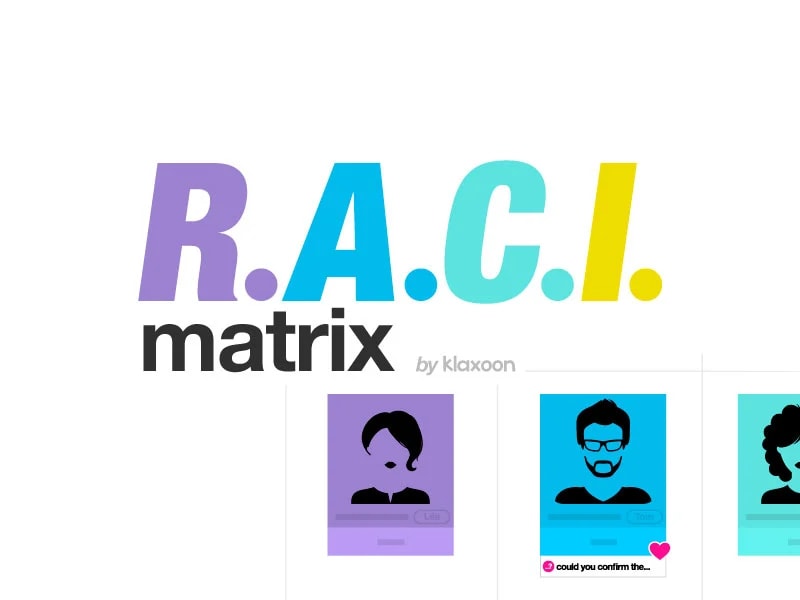5 Whys method: Five powerful examples to drive results in your projects
Executive summary:
Every business owner knows that problems are an inevitable part of entrepreneurship. While you might expect to take a few hits here and there, that does not mean that you and your team should bear the brunt of every problem by passively waiting for the situation to resolve itself.
To help you effectively go from idea to action, the 5 Whys method is ideal for understanding the root causes of any problem. With each "why," you address another layer of surface-level issues to reveal the root cause beneath. It is a simple yet profoundly effective tool that helps your team pinpoint the exact bottleneck in a situation.
This technique stems from the Japanese Kaizen philosophy of continuous, incremental progress. It emphasizes ongoing improvement through straightforward, low-cost actions.
According to the U.S. Bureau of Labor Statistics, about half of all startups fail within the first five years, often due to poor management. This includes inadequate oversight over financials, poor strategic direction, and ineffective leadership.
Therefore, asking "why" is not only a proactive step to transparently address the issues at hand. It is fundamental to solving any type of problem related to business operations. To that end, let's look at 5 ways to integrate the 5 Whys method into your project management, with concrete examples that will improve both your problem-solving and communication skills.

With this ready-to-use template, solve your problems efficiently as a team by getting to their root causes, and asking the right questions.

Having robust project management methodologies in place is paramount for any business. Despite this being a well-known fact, why do nearly half of all businesses still fail?
Interestingly, we begin to unearth the root cause by posing this very question.
Now, consider the potential of continuously probing deeper with this question for more specific scenarios. Be it misdirected resources, declining productivity, or persistent customer complaints, resolving these issues is undoubtedly challenging.
Each time you have an answer to a question, ask the next question based on that information. And that's it, you have just brainstormed using the 5 Whys method.
So how can you use this effective method to overcome obstacles and achieve measurable results for your business? In this article, we explore five compelling examples of using the 5 Whys method, demonstrating how it can profoundly transform your approach to problem-solving.
5 Whys Method: 5 examples to solve any problem effectively
Ever get your headphone cable wrapped in a knot? Now imagine a factory filled with knotted cables and wires. That is what it is like when trying to solve certain problems in a business. Are we right?
From that, it requires patience, precision, and a keen eye for identifying the cause of the tangle. Below, we will dive into five powerful examples where the 5 Whys method decodes and directs project management toward impactful solutions.
1. Delayed project start
The problem
The launch of a new product line was scheduled for Monday morning to capitalize on early week sales spikes. However, the inventory has not arrived, and the digital marketing team's campaigns are all dressed up with nowhere to go.
The 5 Whys analysis
1. Why is the project starting later than expected?
The team is on standby, awaiting the arrival of the new product line. The launch depends on having the product physically in the warehouse to ensure orders can be fulfilled seamlessly as soon as they are placed online.
2. Why are the resources delayed?
The supplier was supposed to deliver the new stock last week but failed to meet this deadline. This delay has caused a domino effect, pushing back marketing and sales plans.
3. Why did the supplier miss the delivery date?
They ran into a snag with insufficient inventory levels to fulfill the order. As a company reliant on 'just-in-time' inventory, any hiccup in supply can cause significant disruptions.
4. Why did the supplier not have enough stock of the materials?
A sudden spike in demand for their materials caught them off-guard. Perhaps a trend or a season spike in the supplier's industry led to increased demand across the board, depleting their stock more quickly than anticipated.
5. Why did the supplier not anticipate the increase in demand?
They did not have an advanced system for analyzing market trends and forecasting demand. Without this tool, they could not accurately predict market changes or adjust their inventory and production plans effectively.
The consensus
The project delay stems from the supplier's inadequate demand forecasting and inventory management. The remedy? Either switch to a supplier with a robust forecasting ability or assist the current supplier in enhancing their system to prevent future supply chain disruptions.
2. Lack of team alignment
The problem
A big project is underway, yet the team seems to be pulling in different directions. The synergy is off, and it is causing confusion with the outlining responsibilities.
The 5 Whys analysis
1. Why is the team not aligned on the project objectives?
Even though the project has kicked off, there is a big problem: nobody seems to really know what they are shooting for. The team is all over the place, with efforts crisscrossing and tasks being repeated.
2. Why was there no clear communication about the project’s goals?
There was no initial meeting to set the stage for what the project aims to achieve. This oversight has left team members with varying interpretations of their roles.
3. Why did the project manager not hold a kickoff meeting with all stakeholders?
The project manager assumed that the team members (having been briefed on previous projects) were on the same page regarding the new project’s goals.
4. Why did the project manager assume everyone was aware?
Informal communication, emails, and quick chats led the project manager to believe that the message had been sufficiently conveyed. This informality assumed a level of pre-existing knowledge that was, in reality, not present.
5. Why was the communication method informal?
There was a mistaken belief that a formal, structured communication strategy was unnecessary for this project, perhaps due to the perceived simplicity of the project or past success with informal methods.
The consensus
The lack of team alignment stems from a failure to communicate and confirm the understanding of the project objectives. To prevent such scenarios in the future, the project manager must not underestimate the need for formal project kickoff meetings, and implement the right tools to clearly align on roles and responsibilities.

With this RACI ready-to-use template, define as a team who is responsible for which task, and what are the roles of each person on a project.

3. Overspending worries
The problem
A significant project is on the brink of exceeding its budget allocation, raising alarms about potential financial mismanagement.
The 5 Whys analysis
1. Why is the project predicted to exceed its budget?
The resources allocated have expanded beyond what was originally estimated, putting pressure on the project's financial limits.
2. Why is the resource allocation higher than expected?
As the project progressed, it became clear that the existing team size was not enough to meet looming deadlines. Which then called for additional personnel that consequently increased costs.
3. Why were more team members added midway through?
The team size proved inadequate for the pace required to meet project milestones, creating a gap between the available workforce and the demands of the project.
4. Why did the team struggle to meet deadlines with the initial number of people?
The project's scope was underestimated from the start, leading to a staffing level that was too low to effectively handle the workload.
5. Why was the scope of the project underestimated?
During the initial planning phase, there was not enough feedback collected from all departments involved, resulting in a skewed perception of the project's true complexity and requirements.
The consensus
Overspending can be traced back to broad estimations of the project's scope during the planning phase. This oversight emphasizes the necessity for effective collaboration tools that allow to collect valuable feedback from every department connected to the project.
To avoid similar overruns in the future, departmental insights must always be included in the initial project scope and resource forecasting.
4. Customer service complaints
The problem
A surge in customer complaints is putting a thorn on the side of the customer service department, causing concern about potential gaps in service quality.
The 5 Whys analysis
1. Why has there been an increase in customer complaints?
Recent feedback points to delays in response times and unresolved issues on first contact, leading to growing dissatisfaction among customers.
2. Why are response times delayed?
The customer service team is overwhelmed, handling more queries than they can efficiently manage. This overload may be due to an uptick in service requests or a lack of adequate staffing.
3. Why is the customer service team overwhelmed?
There has been an unexpected increase in product-related issues reported by customers, which has led to a higher volume of service calls and emails.
4. Why has there been an increase in product-related issues?
Recently, there have been some slips in quality control that have led to more defects in our products. As a result, more customers have been getting in touch, looking for solutions.
5. Why were there quality control lapses in the product batches?
The push to meet rising market demand sped up production, leading to rushed quality checks. This rush to supply the market quickly meant that thorough quality control was overlooked.
The consensus
In this case, the root cause of the rise in customer complaints can be traced back to quality control lapses during a rushed production phase aimed at meeting market demand.
The resolve? Balancing production speed with quality assurance. Implementing these changes requires a collaborative effort across departments to create a customer-centric approach that prioritizes quality and efficient service.
5. Quality control
Toyota, the originator of the 5 Whys method, provides a classic example of its application in resolving quality control issues within its manufacturing process.
The problem
The company faced a persistent issue with paint defects that affected vehicle quality and customer satisfaction. By employing the 5 Whys, Toyota's team methodically traced the problem back to its root cause: inadequate air filtration in the paint area.
The 5 Whys analysis
1. Why were there blemishes on the cars?
Careful evaluations revealed that dust particles were settling on the wet paint before it could dry, leading to imperfections on the vehicle's surface.
2. Why was dust settling on the paint?
The facility's air filtration system, designed to maintain a clean and controlled environment, was failing to capture fine dust particles. These particles were bypassing the filters, contaminating the air in the paint shop.
3. Why wasn't the air filtration system effective?
Though operational, these filters did not meet the stringent requirements needed to maintain the necessary dust-free conditions for high-quality paint jobs.
4. Why were the filters inadequate?
The filters installed were standard, not tailored to the specific needs of automotive paint applications. They lacked the precision to filter out the sub-micron particles that could easily mar the paint's finish.
5. Why were unsuitable filters used?
There was a fundamental misunderstanding of the air quality requirements needed for optimal paint application. The decision-makers had not fully realized the necessity of using specialized, high-efficiency particulate air (HEPA) filters to achieve the desired finish.
The consensus
The conclusion led Toyota to upgrade the air filtration system in the painting area, significantly enhancing the quality of the paint application.
This resolution had a direct impact on improving Toyota's customer satisfaction and operational efficiency. As a result, the effectiveness of the 5 Whys in critical problem-solving scenarios within a corporate setting proves to be sound.
Conclusion
Though the question "why" often conjures images of a child's simple curiosity about the world, it remains integral to addressing some of the most complex and intricate challenges in modern problem-solving strategies.
From resolving budgetary concerns to maintaining stringent quality control, asking "why" is fundamental. However, the manner in which one approaches this questioning is equally important. Therefore, by methodically peeling back layers of a problem, the 5 Whys Method allows organizations to discover sustainable solutions.
Ultimately, mastering the 5 Whys can lead to structural improvements in productivity and effective collaboration, demonstrating that a simple question (or rather 5) can indeed wield powerful results for project management in businesses.

Discover the 5 key team collaboration trends that will transform your organization’s engagement and effectiveness in 2025.

Unlock your teamwork potential
For free, make your first steps to top-tier work efficiency with the Klaxoon Work Collaboration Platform.